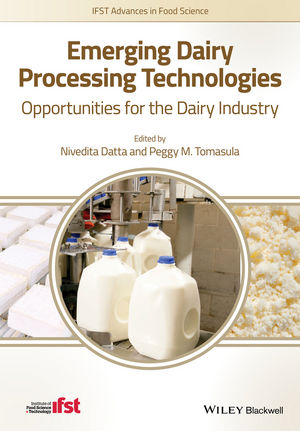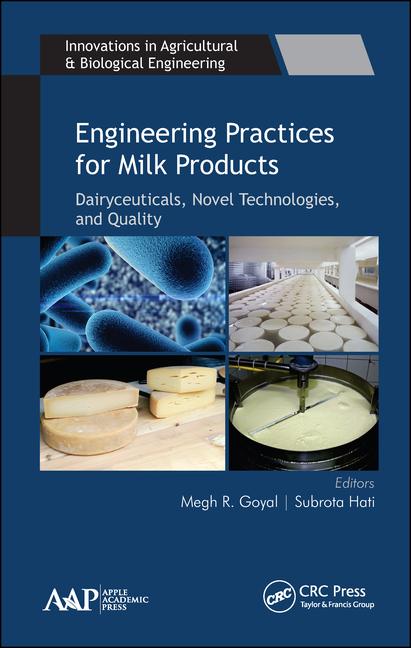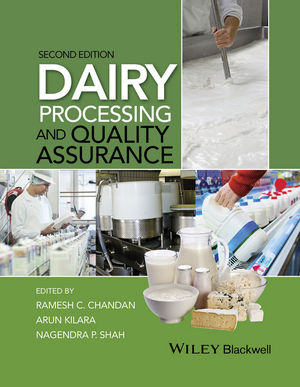Dairies stick with HT/ST for the short term
High temperature/short time pasteurization is the industry standard practice for now. Other technologies will gain acceptance, especially if they can add value to milk.

The Alfa Laval FrontLine series has a plate pattern and pressing depth designed for gentle, uniform heat transfer for sensitive dairy, food and beverage products. The glue-free gaskets are made with FDA-compliant materials which are easy to maintain and have a long service life.

The Cavitator from SPX Flow provides a solution for difficult mixing and dispersing challenges. Hydrodynamic cavitation is said to deliver fast and efficient mixing, dispersion/emulsification, hydration, functionalization and scale-free heating.

The ECO-AXS frame uses Kelvion’s NT heat transfer plate for efficient processing of all products, including those with high viscosities and fouling tendencies. Three different closure systems allow a dairy processor to determine the required level of automation.

DynaShear from Admix is designed as a high-speed, high-shear mixer and emulsifier for continuous processing. Some processors use DynaShear for a single-pass continuous mix after powder addition upstream, while others recirculate product back through a batch reactor for a 3-5 minute total blend time.




Dairies typically apply heat to raw milk. They use high-temperature/short time, higher-heat/shorter time or ultra-high temperature pasteurization. There are alternatives to heat-based pasteurization, such as applying high pressure or using UV light. Columnist Allen Sayler wrote about seven of these in his January 2015 column.
We asked equipment suppliers about the likelihood of nontraditional processing technologies catching on in the United States. We also asked them for tips on how to care for equipment and their predictions about the future of dairy processing. Following are their replies, edited for space and clarity.
By and large, dairies will not adopt alternatives to heat treatment of raw milk because the costs are too high, said the suppliers we interviewed.
“Dairies will continue with HTST for the foreseeable future,” said Jack Fleming of MG Newell. “Milk is a commodity product that doesn’t allow for the quick adoption of new technologies. But I certainly think [dairy processors] will keep an eye on it for the future.”
“Because of price, efficiency and concern on controls that Mr. Sayler outlined, alternatives appear to be a better fit for small and specialized applications,” said Kelvion’s Melissa C. Fryer. “Plate heat exchangers used in HTST pasteurization are very efficient, compact and effective equipment for the pasteurization process, especially at the high flowrates required in many U.S. dairies.”
Tetra Pak’s Eva Maria Wooldridge said the dairy industry will “certainly” adopt some of these technologies, but it will do so slowly and gradually.
“There has been a number of developments on alternative heat for pasteurizing milk. This includes UV light, microwave and electroheating. Tetra Pak pays a lot of attention to these developments and many others. We have a team dedicated to understanding the potential behind them,” Wooldridge said.
Several commentators noted that the dairy processing industry is conservative and that dairy consumers need to be won over.
Mark Litchfield of GEA North America noted, “Heat treatment represents a simple, verifiable and cost-effective method for pathogen destruction. Improved thermal techniques continue to evolve, minimizing the associated defects. For these reasons, heat treatment will remain the predominant method.”
He noted that complementary technologies, specifically bacteria removal separators, are achieving wider acceptance. One installation is found in Kroger’s Mountain View fluid milk facility in Denver, named Plant of the Year in 2015 by Dairy Foods.
Titus Porter of Armfield Inc. said that alternative processes such as ohmic heating, microwave heating, and UV pasteurization are accepted methods but they will most likely not become mainstream. One reason, he said, is the high cost of changing to these methods.
Another reason is that “Americans have grown to love and accept the taste of both fresh and ESL milk,” Porter said. “The thermal process does give milk a distinct taste and mouthfeel. When you move away from this, using alternative methods of processing, you will lose in the end. Where it has proved to be an asset for some processing, it will be a liability for dairy processing.”
Porter’s colleague Mark Fillingham agreed that dairies will stay with heat-treatment of raw milk because of costs. But high-pressure processing will be used for “preserved premium products, such as fresh juice,” he said.
Longer shelf life
If heat treatment remains the standard way to pasteurize milk, then what’s the outlook for extended shelf life (ESL) dairy and nondairy beverages, including those in aseptic packages?
“Having an aseptic (or ESL) product offers a lot of advantages in terms of transportation costs,” said Chris Anderson of SPX Flow.
The advantages also include the ability to profitably produce products with lower sales volumes but longer shelf life, and the possibility of further geographical reach.
Bruce Blanchard of GEA said it is “important to draw the distinction between UHT and ESL processing. UHT is aseptic processing. ESL is not, though it may share some, many, or all characteristics of UHT.”
UHT is a system validated by the Food and Drug Administration, Blanchard explained. UHT is defined by a thermal treatment that exceeds pasteurization. ESL is not an FDA-validated system. ESL may employ thermal treatment above and beyond pasteurization or it may not, Blanchard said.
“ESL may simply employ improved environmental hygiene and product handling techniques to mitigate post-pasteurization contamination. Or ESL may augment the microbial load reduction achieved by the thermal treatment with physical removal techniques such as centrifugation (bacterial removal separators) or cross-flow membrane filtration (microfiltration),” he said.
Wooldridge said direct steam injection is the “preferred method,” but also noted the use of technologies such as bactofugation or microfiltration. These processing solutions have been used for a long time in other countries, she said, adding that there is “no doubt” that dairy processors are increasingly adopting aseptic or ESL technologies.
She said extending the shelf life to 35 days and maintaining the taste profile without added heat treatment can add value to fluid milk products.
“Improvements in direct-heating techniques, including steam injection but especially steam infusion, offer real opportunities for producing milk products with corresponding high microbial load reduction yet rivaling the flavor profile of fresh pasteurized milk,” said Nathan Allen of GEA.
Fillingham pointed out that ESL milk products are not uncommon in the United States. For example, organic milk products sold by Stonyfield or Horizon are processed this way. Porter added that ESL products offer cost savings for the average consumer.
“They are not buying a half-gallon or gallon of milk every 13-16 days due to spoilage,” he said.
Don Byrum of MG Newell said aseptic packaging will be a slow transition for the average consumer.
“Refrigerators exist in every home, so there is really no reason for the consumer to adopt a new type of storage option for dairy,” he said.
Chris Claringbould of SPX Flow noted that many high protein and flavored milk drinks are already being made with full aseptic processing and shipped nationwide at ambient temperatures. The additional cost of the processing is being offset by the reduction in transport costs.
“Current regulations, however, require that products such as Grade A white milk are still shipped along a cold supply chain,” Claringbould noted. “As regulations are updated in line with the technology now available, more and more products will be shipped at ambient temperatures. Because of current consumer perceptions, it is likely that these products will still be refrigerated at the supermarket. In the short term, it will be manufacturers who will move the public to aseptic and ESL products by maintaining their perception of freshness utilizing technologies that produce shelf-stable products with fresh tastes.”
Is the U.S. consumer ready to switch from so-called “fresh” milk (HT/ST pasteurized) to an ESL product? Yes, if the price is right, said Jakob Worsoe of Alfa Laval. “If the price for ESL products is attractive, consumers might be willing to change behavior.”
“The idea of broader product ranges being sold at ambient temperature in the supermarket and refrigerated by the consumer just prior to use, however, is likely to be a long way off, although common today in countries such as Germany,” Claringbould said.
Attributes of processing equipment
When we surveyed dairy processors about their equipment purchasing plans (see September 2016, page 12), we asked what they look for. The top three attributes are product quality/durability, ease of use and ability to integrate with current equipment. Price was fourth. We put the same question to our panel of equipment suppliers.
Processors are interested in low total cost of ownership, said Rick Early of Admix. ”Cleaning and ease of operation are givens with any type of equipment.”
Dairy plants want “peace of mind,” said Worsoe. “They should be able to trust the equipment is doing the job without any risk. For a heat exchanger, the dairy should be able to have long running time and reliable cleaning.”
Fryer said easy-to-close plate heat exchanger frames “provide many of the features processors are looking for. Smart frames provide ease of operation and reliability by closing to the proper dimension at the touch of a button. As a plate heat exchanger, it provides energy efficiency and cleanability. If a problem does arise, the frame is easy to open and repair to start production again.”
Certain features are essential, such as long run times before CIP, energy efficiency and cleanability, noted our panel.
“Dairies are looking for less downtime and more run time,” said Porter. “So many have changed to tube-in-tube heat exchanger rather than the standard plate-in-frame. Plate-in-frames offer more surface area, but they can be difficult to work with due to the fact that you need to shut-down for at least one shift to clean. Also at higher UHT temperatures, the gaskets tend to fail due to pressure. This creates downtime for repair. Heating efficiency is also important as the dairy needs to rely on regeneration in the heat exchangers to decrease energy consumption. Tube-in-tube heat exchangers have been the norm as they have a lower delta T and are easier to clean than plate-in-frame heat exchangers.”
What’s on the horizon?
So what can the dairy plant manager expect in the next generation of processing equipment? We asked the panel to look into their crystal balls.
“We might see more small series products like we have seen in the beer industry for the last 10 years,” Worsoe said. “Dairies are starting up small-scale productions to capture the niche market, where consumers are willing to pay a premium. Therefore, the equipment needs to follow through by fast changeover time and reduced waste at the changeover.”
GEA’s Robert Cupka offered this view. “Energy efficiency, recovery and reuse will gain broader traction in North America, as has been the case in Europe for a decade or more. Hygienic standards for equipment and the environment will continue to evolve. Customers will be evaluating newer technologies that address product yield issues. Current heat treatment, centrifugation and homogenization technology is far advanced from that offered just 10 years ago.”
Porter said that as cost of transport and storage continue to rise, aseptic packaging and process will continue to increase.
“I could definitely see a trend toward HPP as a more gentle and efficient method of processing. In a dairy plant the fluid milk operation pays the bills, but the alternative beverages and juices allow them to make profit,” Porter said. “HPP would definitely fit into this equation. Organic products, with the addition of more plant-based fluid milk products, will feed the need for more steam injection processing. A hybrid plant of some sort with all three technologies (HPP, direct steam injection and indirect tubular) would be a good plan for the future.”
Filllingham said the next phase in dairy processing could be a hybrid multifunctional plant which uses a combination of thermal processing, UV light, microwave, high pressure or ohmic heating.
Early said to watch for powder induction and dispersion technology. This can cut batch times in half and drastically reduce air entrainment and dusting, he said.
“It enables processors to produce smoother product, while delivering consistent fill weights at higher filler speeds and allowing operators to add powders from safety of floor level.”
Tetra Pak’s Wooldridge said there are several avenues to watch.
“The consolidation of the industry is calling for building larger factories, and the need for higher capacities or efficiencies. On the other end, it is clear that the industry is looking at adding value to the consumers. Technology is an essential part of that.”
She explained that adding value can take the form of “delivering great-tasting dairy products, safer (products) with longer shelf life and providing health benefits. A number of technologies can and will help this: membrane filtration, centrifugal separation and novel heat treatment technologies. All are technologies that will help add value.”
Fryer said “technological development for processing equipment has been and will likely continue to be focused on increased efficiency and ease of operation.”
Clean and maintain equipment to prolong its life
Our expert panel provided these tips and suggestions for maintaining dairy processing equipment.
- The pasteurizer (or press) should be cleaned and inspected before the first shift of operation.
- Protect heat exchangers from water and chemical splashing. Avoid exposing the unit to ultraviolet rays and ozone (typically generated from electrical sources).
- During operation, monitor temperature and pressure changes as this can be a sign of internal fouling or leakage. Visually inspect the unit externally for signs of gasket leakage.
- Keep tightening bolts clean and well-lubricated.
- The use of condition monitoring techniques will reduce the need to open units for inspection.
- Have a stand-by unit ready. It should be kept clean and dry.
- All fillers need to be CIP’d and inspected for cleanliness. Replace fill heads as needed.
- Check cooler temperatures hourly.
- Drain and inspect all raw tanks at least once a week.
- Check temperature gauges on pasteurized tanks hourly. Calibrate them yearly.
- Check filler scales hourly. Calibrate them once a month using standard weights.
- Micro swabs should be completed on all fillers after the filler has been cleaned and sanitized during the third shift cleanup each day.
- Perform an in-house food safety audit monthly to make sure that all good manufacturing practices are being observed and standard operating procedures are being followed.
- Make sure that the unit is vented upon start-up. Open and close inlet and outlet valves slowly to reduce the chance of pressure surges and/or water hammer.
- Protect the unit by installing filters and/or strainers upstream of the heat exchanger. This will reduce the chance of particulate fouling.
- When any unit is taken out of service, flush it with fresh water and drain it completely.
- Utilizing spare parts from the original equipment manufacturer (OEM) will guarantee performance, reliability and equipment life. Maintain inventory of essential spares making sure that proper storage instructions are followed.
- Check plates and gaskets regularly to avoid unplanned breakdowns.
- Change gaskets on plate heat exchangers at least once a year.
- Check all seals monthly.
- Check new homogenizer valves yearly.
- Perform required maintenance according to documentation.
Sources: Alfa Laval, Armfield, Kelvion, Tetra Pak
Looking for a reprint of this article?
From high-res PDFs to custom plaques, order your copy today!














